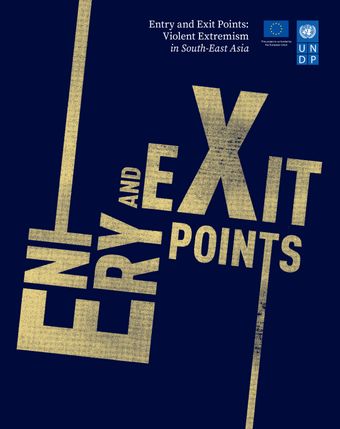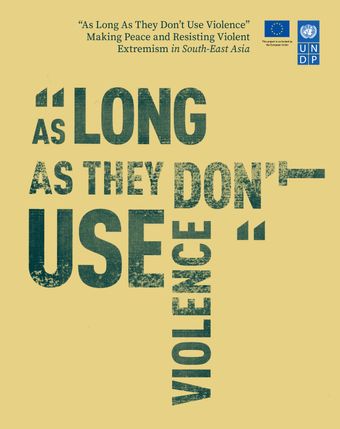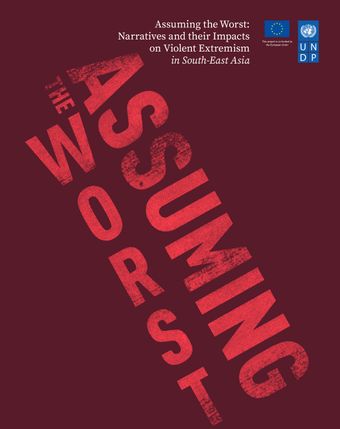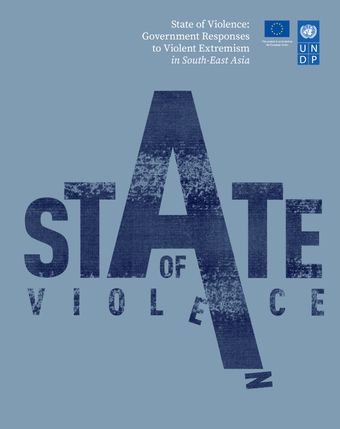About
Violent extremism is a leading challenge to peace across the world
South-East Asia is home to incredibly diverse and dynamic communities who hold a plethora of religions, ethnicities, languages, and systems of governance. Those who join extremist groups often have non-linear motivations, and violent extremism remains a significant but not insurmountable challenge. Understanding how conflict, violence, identity, human rights and extremism are enmeshed offers an entry point for states to better understand and respond to this problem.
Our approach
UNDP employs an inclusive, human-rights-based approach that is grounded in local experiences to better understand, prevent and mitigate violent extremism in the region.
UNDP plays a prominent role when it comes to the Prevention of Violent Extremism (PVE). Based on the Secretary-General’s Plan of Action on PVE, UNDP’s comprehensive strategic framework on Preventing Violent Extremism through Inclusive Development and the Promotion of Tolerance and Respect for Diversity balances the need to address violent extremism with the governing of increasingly diverse and multicultural societies through a human-rights based approach.
About the research
Entry and Exit Points: Violent Extremism in South-East Asia seeks to investigate factors that contribute to violent extremism in South-East Asia, and the actions required by states to prevent it.
In partnership with the European Union, UNDP commissioned a team of researchers to conduct 18 months of qualitative research. This research is the product of 200 in-depth, in-country interviews with government officials, former extremists, researchers, journalists and those working on issues related to violent extremism across the region. Entry and Exit Points presents a summary of the findings of four thematic studies.
Entry and Exit Points:
Violent Extremism in South-East Asia
This flagship publication provides an overview of the key findings of four thematic reports. It challenges assumptions about violent extremism and assesses PVE approaches in the South-East Asian context by addressing: how states can mitigate against environments conducive to violent extremism; the importance of peacemaking and conflict prevention in preventing violent extremism; the narratives created by different stakeholders and how they may incite violence; and, an analysis of the risks posed by both returned foreign fighters and extremists due to be released from prison.
"As Long As They Don't Use Violence":
Making Peace and Resisting Violent Extremism in South-East Asia
Violence has been used to achieve political aims by governments and non-state actors. This paper examines the impact of past and ongoing conflicts, and their political responses, on Aceh, Ambon, Maluku, and Poso in Indonesia, Mindanao in the Philippines, and Timor-Leste. It explores how the conflicts interact with violent extremism and affect its prevention. While conflict often opens the door to extremists, political processes may help close it by creating favourable environments for disengagement, resilience and resistance to extremists and their ideology.
Assuming the Worst:
Narratives and their Impacts on Violent Extremism in South-East Asia
Policy and programming for preventing or countering violent extremism (P/CVE) in South-East Asian states are arguably underpinned by assumptions about the scale, nature and sources of risk of violent extremism. This paper assesses the accuracy and utility of influential assumptions and narratives about violent extremism in the context of South-East Asia, its extremist groups and movements, and the ways that radicalization has historically occurred in the region. P/CVE policies need to be examined in the context of empirical evidence and evolving local political contexts if they are to avoid worsening the situation. A holistic research agenda would help identify overlooked sources of risk and better adjust resource allocation in P/CVE programming.
Homecoming:
The Return of Foreign Terrorist Fighters in South-East Asia
South-East Asians who travelled to fight and live in Iraq and Syria are beginning to return home. Returning foreign terrorist fighters (FTFs) may pose a risk to peace in South-East Asia unless governments design effective responses. This paper analyses the real risks posed by those that return, both combatants and non-combatants, and explores the issues faced by governments and local communities as well as FTFs. The reasons that lead people to return home are as diverse as the decisions to leave. Even if only small numbers come home to Indonesia and Malaysia, individualized reintegration programmes are urgently needed. Disengagement from violence— rather than deradicalization - should be the focus of government efforts.
State of Violence:
Government responses to violent extremism in South-East Asia
States have a sizable role to play in the emergence or expansion of violent extremism through policies that have marginalized ethnic or religious groups. This paper argues that heavily securitized state responses to violent extremism, exclusionary politics based on religious and ethnic identity, state action and inaction which reinforces hate speech and intolerance in society, and the use of violence against citizens are all ways in which governments may engender further violence. Instead, South-East Asian governments should implement policies and programmes that center around upholding human rights, building inclusive politics through conflict resolution, protecting minority rights, reducing violence and tackling hate speech.





